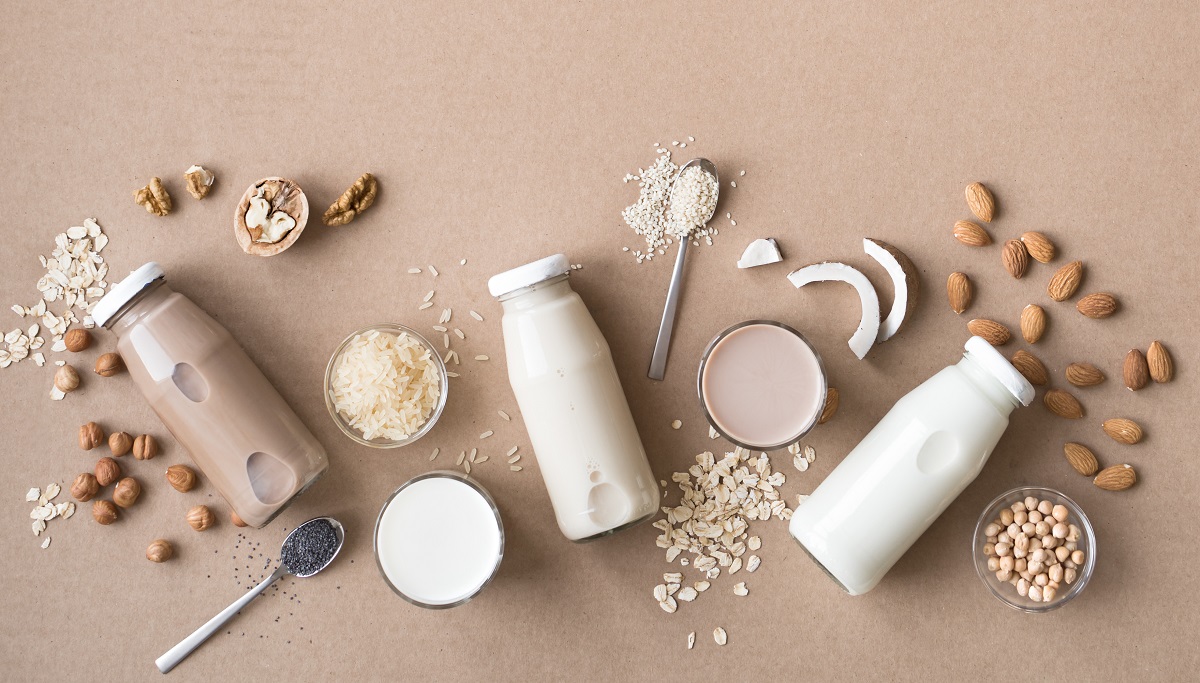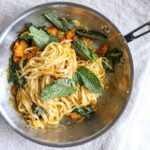Craving creamy pasta, decadent cheesecake, or a comforting bowl of potato soup but following a dairy-free lifestyle? Fear not! This guide unveils a treasure trove of creative substitutions, transforming your favorite comfort foods into delicious, dairy-free delights. We’ll explore vibrant alternatives for creamy textures, delve into the art of dairy-free baking, and master the techniques for crafting savory dishes that are both satisfying and free from dairy. Prepare to embark on a culinary journey where indulgence meets innovation.
From perfectly mimicking the richness of cream sauces with coconut, cashew, or oat cream to achieving melt-in-your-mouth dairy-free cheese in lasagna, this comprehensive guide provides detailed recipes, nutritional comparisons, and insightful tips. Imagine the velvety texture of a dairy-free chocolate cake, the satisfying bite of a vegan cheesecake, or the creamy goodness of a dairy-free tomato soup—all achievable with simple swaps and clever techniques. Get ready to reinvent your comfort food repertoire with exciting, healthy, and surprisingly easy dairy-free alternatives.
Dairy-Free Alternatives for Creamy Textures

Dairy-free cooking offers a world of possibilities for creating rich and decadent dishes without relying on traditional dairy products. Many delicious alternatives exist that provide the same creamy texture and mouthfeel we love in our favorite comfort foods, often with added nutritional benefits. Understanding the unique properties of these alternatives is key to achieving successful dairy-free recipes.
Coconut Cream
Coconut cream, the thick, solidified portion of coconut milk, lends a distinctly tropical flavor and incredibly rich, almost decadent creaminess to sauces and desserts. Its high fat content contributes to a luxuriously smooth texture, ideal for thickening sauces or creating luscious fillings for pies and pastries. However, its strong coconut flavor might not be suitable for all recipes, potentially overpowering more subtle flavors. In a creamy pasta sauce, coconut cream would add a noticeable sweetness and a thick, almost velvety consistency. Imagine the creamy sauce clinging beautifully to each strand of pasta, a rich white coating contrasting with the vibrant colors of the vegetables.
Cashew Cream
Cashew cream, made by soaking and blending raw cashews until smooth, offers a remarkably neutral flavor profile, making it a versatile option for various applications. Its creamy texture is slightly less dense than coconut cream, resulting in a lighter, airier consistency. This makes it particularly well-suited for sauces that require a thinner, more pourable texture, or for lighter desserts where a subtle sweetness is desired. In a pasta sauce, cashew cream would create a smoother, less intensely flavored sauce, allowing other ingredients to shine. Picture the pale, creamy sauce coating the pasta, its subtle texture a perfect complement to the herbs and vegetables.
Oat Cream
Oat cream, created by blending soaked oats with water or plant-based milk, provides a lighter, less intensely flavored creaminess compared to coconut or cashew cream. Its texture is generally thinner and less rich, making it a good option for lighter sauces or dressings. It also offers a slightly grainy texture, which some might find appealing, while others might prefer a smoother consistency. In a creamy pasta sauce, oat cream would contribute a subtle creaminess and a slightly thicker consistency, but it would lack the richness of coconut or cashew cream. The sauce would be lighter in color and texture, more akin to a light cream sauce than a heavy, decadent one.
Comparison of Coconut, Cashew, and Oat Cream in a Creamy Pasta Sauce
The choice between coconut, cashew, and oat cream for a creamy pasta sauce depends largely on personal preference and the desired flavor profile. Coconut cream will yield the richest, thickest sauce with a pronounced coconut flavor. Cashew cream creates a smoother, more neutral sauce, allowing other flavors to stand out. Oat cream offers a lighter, less intensely flavored sauce with a slightly grainy texture. The visual difference would be striking: the coconut cream sauce a vibrant white, the cashew cream a pale, almost off-white, and the oat cream a lighter, slightly off-white with a subtle grain visible.
| Cream Type | Fat Content (per 100g, approximate) | Protein Content (per 100g, approximate) | Notable Vitamins/Minerals |
|---|---|---|---|
| Coconut Cream | 50-60g | 2-3g | Medium Chain Triglycerides (MCTs), Vitamin K |
| Cashew Cream | 40-50g | 5-7g | Magnesium, Phosphorus, Zinc |
| Oat Cream | 10-20g | 5-8g | Fiber, Iron, Vitamin B1 |
Substituting Dairy in Baked Goods
Baking without dairy requires thoughtful substitutions to maintain texture and flavor. Successfully swapping dairy products in baked goods hinges on understanding the role each ingredient plays – butter provides richness and structure, while milk adds moisture and tenderness. Choosing the right alternatives is key to achieving delicious dairy-free results.
Dairy-Free Chocolate Chip Cookies
Replacing butter and milk in a classic chocolate chip cookie recipe presents a delightful challenge. Vegan butter alternatives, such as Miyoko’s Kitchen Cultured Vegan Butter or Melt Organic Vegan Butter, offer a similar richness and melting point to traditional butter. Plant-based milks, like almond milk or oat milk, can successfully replace cow’s milk, although the choice influences the final texture. Using a full-fat coconut milk may result in a slightly sweeter and denser cookie.
Using Miyoko’s Kitchen Cultured Vegan Butter will yield a cookie with a buttery, slightly tangy flavor and a melt-in-your-mouth texture. The cookie will have a slightly crumblier texture compared to the traditional recipe. Almond milk will produce a slightly less dense cookie, while oat milk may give a slightly chewier texture. The differences are subtle, but noticeable to a discerning palate. The choice depends on personal preference, but experimentation is encouraged!
Dairy-Free Cheesecake Variations
Three variations of dairy-free cheesecake showcase the versatility of dairy-free cream cheese alternatives and crust options.
Variation 1: Classic with a Traditional Crust
This version uses Tofutti cream cheese, known for its creamy texture and slightly tangy flavor. The crust is a classic graham cracker crust, providing a familiar, slightly sweet base that complements the tanginess of the filling. The final product will have a smooth, creamy texture and a balanced sweet and tangy flavor profile. The appearance will be a creamy, pale yellow filling atop a golden brown crust.
Variation 2: Cashew Cream Cheese with a Gluten-Free Crust
This variation uses homemade cashew cream cheese, creating a luxuriously smooth and rich filling with a slightly nutty flavor. The crust is made from almond flour and dates, providing a naturally sweet and gluten-free base. The texture will be incredibly smooth and creamy, with a subtle sweetness from the dates and a nutty undertone from the cashew cream cheese. The color will be a pale ivory, contrasting beautifully with the darker brown crust.
Variation 3: Coconut Cream Cheese with a Chocolate Crust
This option uses a coconut cream cheese alternative, offering a unique tropical twist. The crust is made from crushed chocolate cookies, creating a decadent and intensely chocolatey base. The filling will have a slightly denser texture than the other versions, with a distinct coconut flavor that blends beautifully with the dark chocolate crust. The final product will showcase a rich, dark brown crust and a creamy off-white filling, creating a visually striking dessert.
Dairy-Free Chocolate Cake
This recipe creates a moist and decadent dairy-free chocolate cake.
Ingredients:
1 ½ cups all-purpose flour
¾ cup unsweetened cocoa powder
1 ½ teaspoons baking powder
1 ½ teaspoons baking soda
¾ teaspoon salt
1 cup granulated sugar
¾ cup unsweetened applesauce
1 cup plant-based milk (almond or soy recommended)
2 teaspoons vanilla extract
½ cup vegetable oil
2 tablespoons apple cider vinegar
Instructions:
1. Preheat oven to 350°F (175°C). Grease and flour two 9-inch round cake pans.
2. In a large bowl, whisk together flour, cocoa powder, baking powder, baking soda, and salt.
3. In a separate bowl, combine sugar, applesauce, plant-based milk, vanilla extract, oil, and apple cider vinegar.
4. Gradually add the wet ingredients to the dry ingredients, mixing until just combined. The batter will be thick and dark brown, almost resembling melted chocolate.
5. Divide the batter evenly between the prepared cake pans.
6. Bake for 30-35 minutes, or until a toothpick inserted into the center comes out clean.
7. Let the cakes cool in the pans for 10 minutes before inverting them onto a wire rack to cool completely. The cooled cake will have a deep, rich brown color, and a slightly domed top. The texture will be moist and tender, with a slight crumb.
Mastering the art of dairy-free cooking doesn’t mean sacrificing flavor or texture; it’s about embracing creativity and discovering exciting new possibilities. This exploration of dairy-free swaps has shown how simple ingredient substitutions can transform classic comfort foods into satisfying, plant-based masterpieces. Whether you’re vegan, lactose intolerant, or simply seeking healthier alternatives, the recipes and techniques presented here empower you to enjoy your favorite dishes without compromise. So, dive into the kitchen, experiment with these innovative swaps, and rediscover the joy of comforting, delicious food, free from dairy.
Quick FAQs
What are the best dairy-free cheeses for melting?
Nutritional yeast offers a cheesy flavor but doesn’t melt well. Many vegan cheddar cheeses melt well, but results can vary by brand. Experiment to find your favorite.
Can I use any plant-based milk in baking?
While many work, some have different fat and water content impacting texture. Oat milk and soy milk often work well, but almond milk might require adjustments.
How do I store dairy-free cream sauces?
Store in an airtight container in the refrigerator for up to 3-4 days. For longer storage, freeze in portions.
Are all dairy-free ice creams equally healthy?
Nutritional content varies greatly depending on the base (coconut, cashew, oat, etc.) and added sugars. Check labels carefully.


